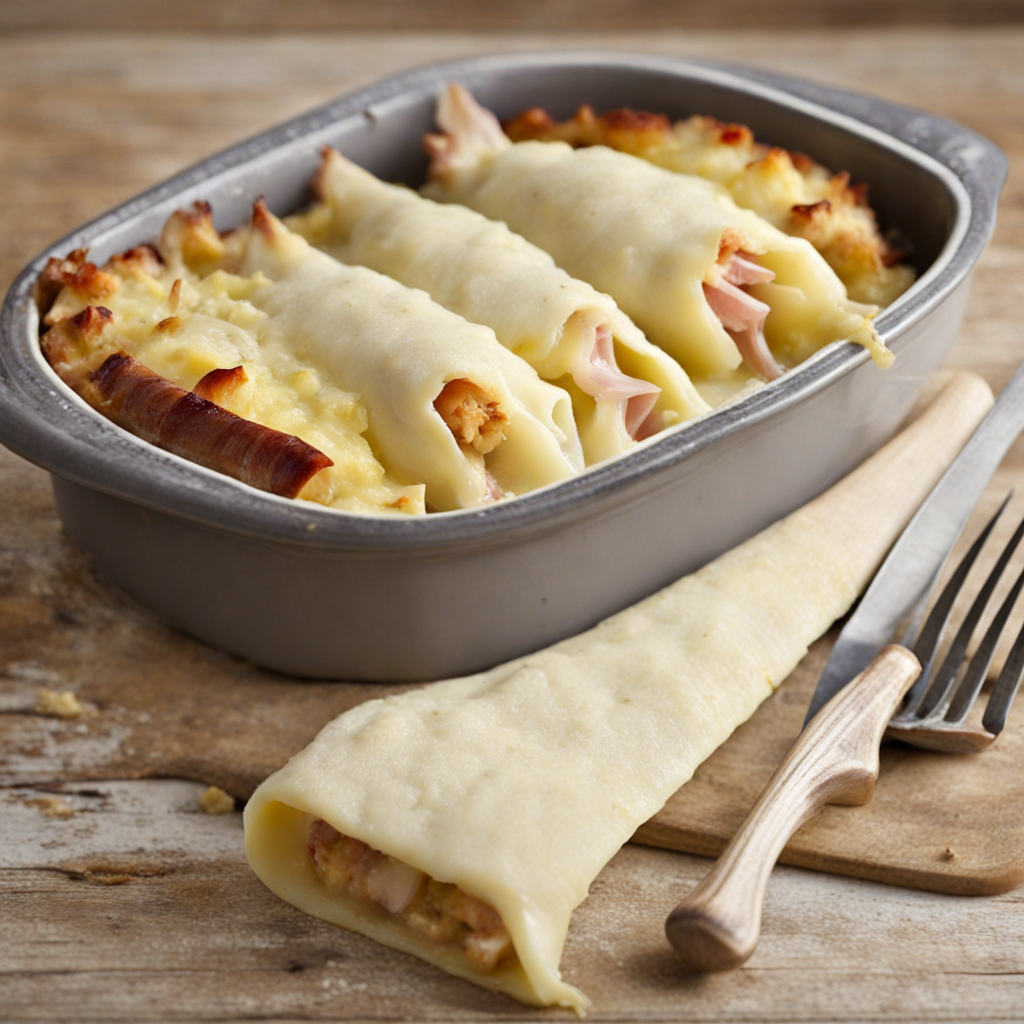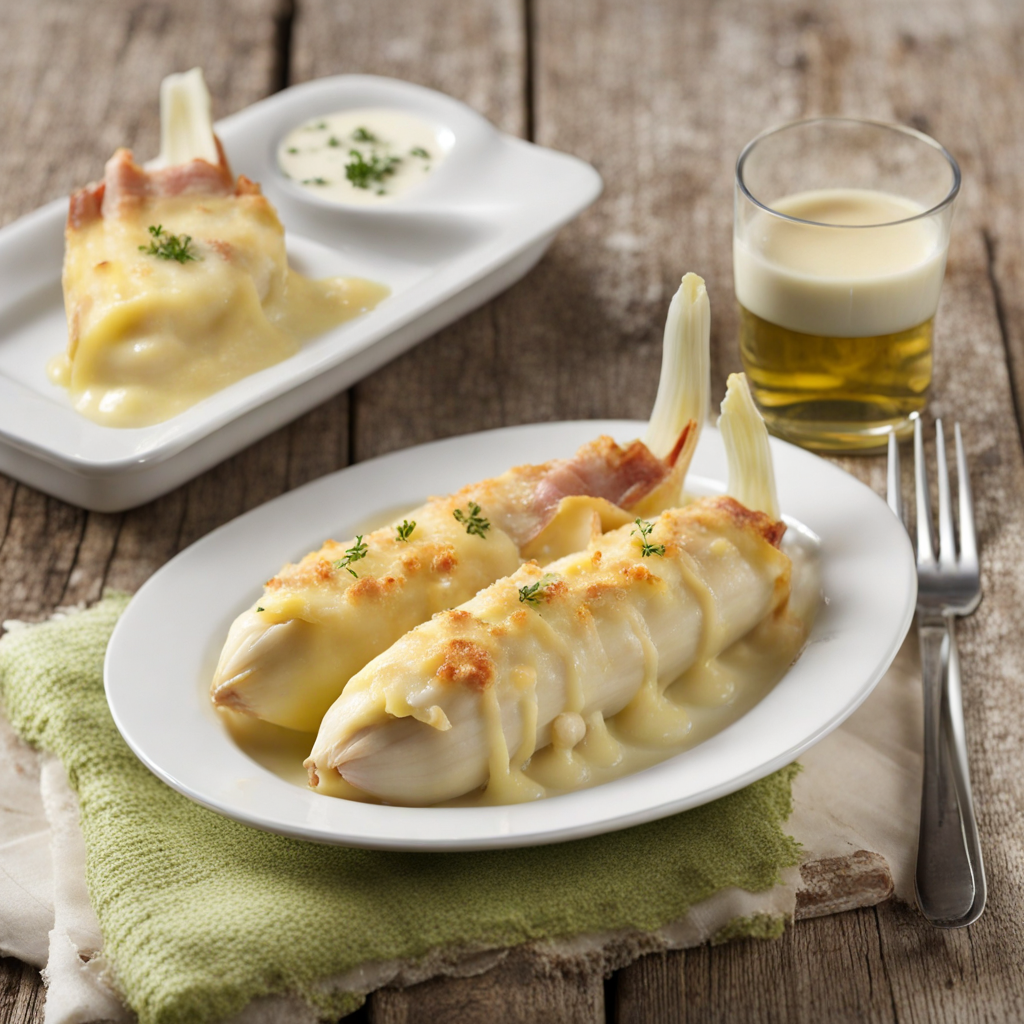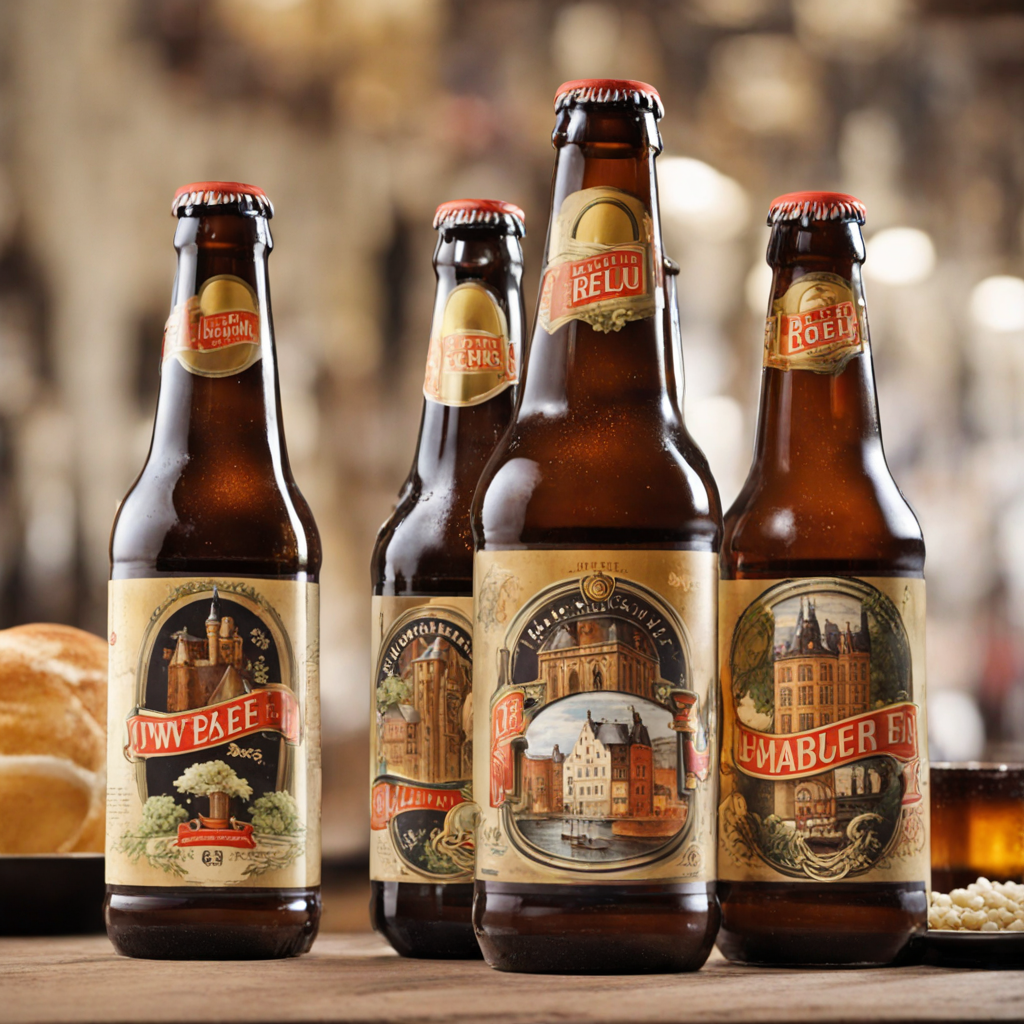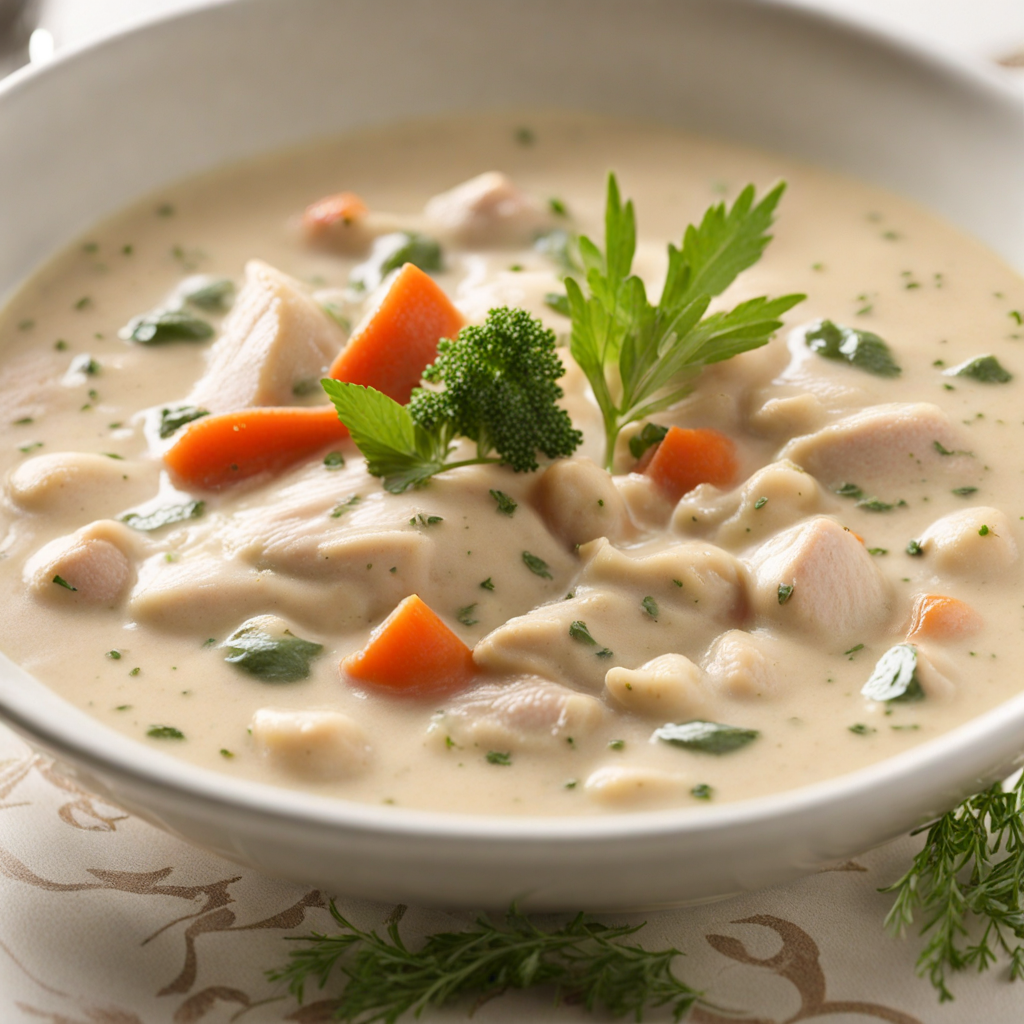Chicon au gratin
Chicon au gratin, also known as Belgian endive gratin, is a delightful dish that showcases the unique flavors of Belgian cuisine. The star ingredient, chicon, or Belgian endive, has a slightly bitter taste that is beautifully complemented by the creamy and cheesy sauce that envelops it. The endives are typically blanched to soften their texture and mellow their bitterness before being wrapped in slices of ham, creating a harmonious balance of flavors and textures that is both comforting and indulgent. The dish is then generously covered in a rich béchamel sauce, often enhanced with Gruyère or another flavorful cheese, which melts into a gooey, golden layer as it bakes. This combination of ham, endive, and cheese creates a savory profile that is satisfying and filling, making it a popular choice for both casual family dinners and special occasions. The contrasting textures of the tender endives and the gooey cheese provide an inviting experience for the palate. When served, Chicon au gratin is typically garnished with a sprinkle of fresh herbs or additional cheese, adding a touch of brightness to the dish. It is often accompanied by a side of crusty bread or a simple salad, allowing the flavors of the gratin to take center stage. Each bite offers a warm embrace of flavors that showcases the heartiness of Belgian cuisine, making it a must-try for anyone looking to explore new and exciting culinary experiences.
How It Became This Dish
Chicon au Gratin: A Culinary Journey Through Time Chicon au gratin, a beloved dish from Belgium, is not merely a recipe but a reflection of the country's agricultural heritage, culinary traditions, and sociocultural evolution. This dish, consisting primarily of Belgian endive (known as "chicon" in French), ham, and a creamy béchamel sauce topped with melted cheese, encapsulates the essence of Belgian comfort food. Its origins, cultural significance, and development over time showcase a rich tapestry woven from the land's history and its people's ingenuity. #### Origins of Chicon The history of chicon, or Belgian endive, dates back to the late 19th century. While the chicory plant, from which Belgian endive is derived, has been cultivated since ancient times for its leaves and roots, the specific cultivation of chicon began in the region of Schaerbeek, near Brussels, in the 1830s. It was discovered that by forcing the chicory roots to sprout in darkened conditions, a delicate, mildly bitter leaf could be produced. This innovation was a significant agricultural breakthrough, and it quickly gained popularity. The name "chicon" comes from the French word for chicory, and as its cultivation spread throughout Belgium, it became a staple in local cuisine. Chicon au gratin likely emerged as chefs and home cooks sought to showcase this versatile vegetable in hearty, comforting dishes. The combination of endive with ham and cheese reflects both the French influence on Belgian cuisine and the practical need to create satisfying meals from locally sourced ingredients. #### Cultural Significance Chicon au gratin is more than just a dish; it is a symbol of Belgian identity and culinary pride. The Belgian people have long celebrated their agricultural heritage, and chicon represents a connection to the land and the farmers who cultivate it. As a dish, it embodies the principles of "cuisine de terroir," or regional cooking that emphasizes the use of local ingredients and traditional methods. In Belgium, chicon au gratin is often served as a main course in family meals, particularly during the colder months. It evokes a sense of nostalgia and comfort, frequently appearing on Sunday dinner tables or during festive gatherings. This dish is also a testament to the Belgian love for cheese, particularly Gruyère, which is integral to the gratin topping. Cheese has long been a staple in Belgian cuisine, reflecting the country's rich dairy farming traditions. Furthermore, chicon au gratin serves as a culinary bridge between various cultural influences. Belgium's history is marked by its location at the crossroads of Europe, leading to a blending of French, Dutch, and German culinary traditions. The use of béchamel sauce and cheese in chicon au gratin is reminiscent of French culinary techniques, while the use of endive showcases the unique agricultural practices of Belgium. This fusion of influences creates a dish that is both distinctly Belgian and universally appealing. #### Development Over Time As with many traditional dishes, chicon au gratin has evolved over time. In its early iterations, the dish was likely simpler, focusing primarily on the combination of endive and ham, with basic seasonings. However, as culinary techniques advanced and palates became more sophisticated, the recipe began to incorporate more complex flavors and ingredients. The béchamel sauce, a classic French white sauce made from butter, flour, and milk, became a fundamental component of chicon au gratin. Its creamy texture complements the slight bitterness of the endive, while also binding the dish together. Chefs began to experiment with variations, adding nutmeg, garlic, or even mustard to elevate the sauce's flavor profile. As the dish gained popularity, it also adapted to changing dietary preferences and culinary trends. In recent years, health-conscious consumers have sought to lighten traditional recipes, leading to variations of chicon au gratin that incorporate alternative ingredients. Some recipes now feature low-fat cheeses or even plant-based substitutes, allowing for a modern twist on this classic dish. Moreover, chicon au gratin has found its way onto restaurant menus, where chefs take creative liberties to present the dish in innovative ways. Gourmet versions might include additional elements such as truffle oil, aged cheeses, or even a crispy breadcrumb topping for added texture. These adaptations reflect the broader trend of reimagining traditional dishes in contemporary gastronomy, ensuring that chicon au gratin remains relevant in today’s culinary landscape. #### Conclusion Chicon au gratin is a dish that tells a story—a narrative of agricultural innovation, cultural identity, and culinary evolution. From its humble beginnings in the fields of Schaerbeek to its place on tables across Belgium and beyond, this dish encapsulates the spirit of Belgian cuisine. It brings together local ingredients, traditional techniques, and a love for comfort food, making it a cherished part of the nation’s culinary heritage. As we continue to explore and celebrate the rich tapestry of global cuisines, chicon au gratin stands out not just for its deliciousness but for the history and culture it represents. It is a reminder of the importance of food in forging connections—between the land, its people, and the traditions that bind them together. Whether enjoyed in a cozy home or a bustling restaurant, chicon au gratin remains a timeless dish that warms the heart and nourishes the soul.
You may like
Discover local flavors from Belgium







